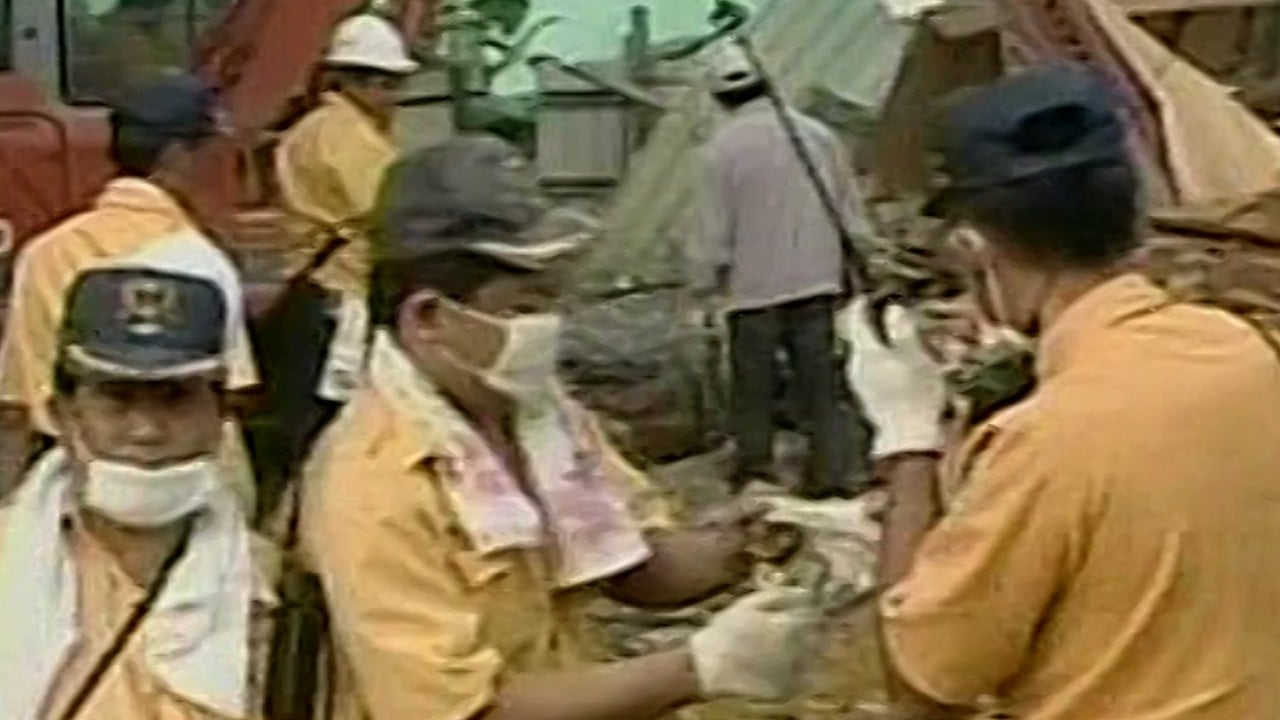
01:40
Magnitude 6.3 earthquake among dozens to rattle Taiwan
Big aftershocks rock Hualien county in Taiwan weeks after 7.3 earthquake
- Two empty buildings collapsed after two quakes, at magnitudes of 6.0 and 6.3, were felt early on Tuesday morning
- Shocks could continue for six months in the aftermath of the earthquake that killed at least 16 people on April 3
The county, along the east coast of the island, experienced the two strongest shocks in about six minutes, according to Taiwan’s Central Weather Administration which recorded a 6.0-magnitude quake at 2.26am at a depth of 10km (6.21 miles).
A second 6.3-magnitude earthquake was recorded at 2.32am, at a depth of 5.5km (3.42 miles), according to the administration.
The earthquake on April 3 was Taiwan’s strongest in 25 years, killing at least 17 and injuring more than 1,000 people. More than a thousand shocks were recorded between then and Tuesday morning, Wu said.
About half of the aftershocks, with magnitudes of 5 or above, occurred from Monday evening to Tuesday morning. The historic Hotel Fouquet and the previously damaged General’s House – a Japanese colonial building – collapsed, but were empty, local media reported. Schools and work in Hualien county were suspended on Tuesday.
Nearby counties – including Taoyuan, Hsinchu and Taichung – as well as the capital Taipei, also experienced shocks.
Wu said the aftershocks could continue for at least six months and called on residents to make better earthquake preparations. But he added that the strength of the shocks is likely to reduce, with any over 7-magnitude unlikely.
“Based on the experience of the September 21 earthquake [in 1999], aftershocks are expected to last at least six months to a year,” said Wu, who did not rule out the possibility of them reaching up to magnitude 6.
Aftershocks of that intensity were reported to have continued for about a year following the devastating 1999 earthquake that killed more than 2,400 people and injured over 11,300.

Wu said that theoretically the intensity of aftershocks should be smaller than the main quake, but there have been exceptions – like the 2022 magnitude-7 trembler in Japan that was followed by a more powerful magnitude-9 event.
According to Wu, aftershocks from the April 3 quake have mainly occurred north of its epicentre and have decreased in number over time, indicating that the energy in the area had gradually released.
With the energy release in the north completed, aftershock activity has started to shift to the southern side of the quake zone, as evidenced by more than 180 aftershocks between Monday and Tuesday, Wu said.
“This is because there has been relatively less energy release in the south,” he said, adding that aftershocks of magnitudes up to six could occur in this part of the fault.
As of 8am on Tuesday, there have been more than 1,110 aftershocks since the April 3 earthquake in Hualien, including four with magnitudes between 6 and 7, according to the administration’s statistics.
A total of 56 aftershocks registered between 5 and 6, while 344 were recorded at magnitudes between 4 and 5. There were 706 earthquakes measuring intensities of between 3 and 4.
Wu called on the public to remain on high alert, warning that heavy rains forecast for the next few days could cause mud or rock slides in mountainous areas, after the shocks loosened mountain soil and rocks.
Lee Chyi-ti, a professor of applied geology at National Central University in Taoyuan, south of Taipei, said most of the aftershocks from the April 3 quake were originally centred offshore but had gradually shifted to the coastal mountain fault system.
Lee said many aftershocks tended to be shallow, with the depth of those occurring after the April 3 earthquake ranging from 5-15km (3.11-9.32 miles), which meant the jolts would be promptly felt.
“The shallower the depth, the greater the impact,” he said, adding that the phenomenon explained why the quakes appeared to be much stronger to people in areas like Taipei.
But according to Lee, earthquakes of an intensity at around magnitude 5 are not expected to cause ground ruptures.




